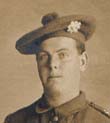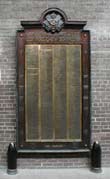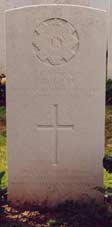In Memory ofCHARLES DUNCAN GRAYPrivate
|
|
Additional Information:
Click on images to view details
|
Son of James and Helen Gray, of Sunside, Kennethmont, Aberdeenshire. War & Victory Medals CWGC records, previously buried at map ref : 62B.5.13.B.1.7 15 (Service) Batt (1st Glasgow) HLI Born at Sunside 30 June 1896 19/5/1916 Called up and reported next day,
given pass home. 1/9/1916 Embarkation leave commences 27/9/1916 Left for front 9/10/11916 Arrived Beuvry, (JG note, near Bethune) 10/10/1916 Shifted to Busnes (JG note,
near Bethune), no further movement entries
Service Notes
The following is an extract from - An Epic of Glasgow, History of the 15th Battalion, The Highland Light Infantry (City of Glasgow Regiment) by Thomas Chalmers and details the actions of Charles Gray's unit at Savy Wood on the day of his death. As one of the casualties of April 2nd he was originally buried in SAVY WOOD NORTH CEMETERY and later moved to SAVY BRITISH CEMETERY in 1920.
The gunners decamped, however, under the fusilade of rifle and machine gun fire, abandoning their pieces, whereupon the Manchesters dug their line so as to command the battery position. The 15th H.L.I. had few casualties in the actual assault, but about 6.15 a.m. the Germans opened a severe bombardment, smashing shells into Francilly and battering the heights. On this wet and dreary morning "B" and "C" Companies were frenziedly digging to consolidate. The shelling went on all day but did not turn the companies from the construction of very fine trenches. They dug and dug with shell-bursts all around them, dug for dear life. But they suffered 40 casualties before they had prepared a position in which to resist counter-attack. 15 HLI Diary entry. |
Commemorative Information
| Cemetery: | SAVY BRITISH CEMETERY, Aisne, France |
| I. I. 6. | |
| Location: |
Savy is a village 6.5
kilometres west of St Quentin. Savy British Cemetery is on the
south-western outskirts of the village, on the west side of the
road to Roupy. |
| Historical Information: | Savy was taken by the 32nd Division on the 1st April 1917, after hard fighting, and Savy Wood on the 2nd. On the 21st March 1918 Savy and Roupy were successfully defended by the 30th Division, but the line was withdrawn after nightfall. The village and the wood were retaken on the 17th September 1918 by the 34th French Division, fighting on the right of the British IX Corps. Savy British Cemetery was made in 1919, and the graves from the battlefields and small cemeteries in the neighbourhood were concentrated into it. There are now over 850, 1914-18 war casualties commemorated in this site. Of these, more than half are unidentified. Memorials are erected in the cemetery to 68 soldiers (chiefly of the 19th King's Liverpools and the 17th Manchesters), buried by the Germans in their cemetery on the St. Quentin-Roupy road, whose graves were destroyed by shell fire. The Cemetery covers an area of 2,555 square metres and is enclosed by a low rubble wall. The following were among the burial grounds from which British graves were removed to Savy British Cemetery:- DALLON GERMAN CEMETERY, North-West of the village of Dallon, containing the graves of 21 British soldiers who fell in March 1918. INNISKILLINGS CEMETERY, DALLON, on the South side of a small wood, North of the St. Quentin-Savy road. Here the 2nd Royal Inniskilling Fusiliers, in April 1917, buried 17 of their number, three other British soldiers and one French Interpreter. LANCASHIRE CEMETERY, on the East side of SAVY WOOD, made by the 16th Lancashire Fusiliers in April 1917, and containing the graves of 27 men of the 15th and 16th Lancashire Fusiliers and nine other British soldiers. ST. QUENTIN-ROUPY ROAD GERMAN CEMETERY, at L'Epine-de-Dallon, which contained the graves of 232 British soldiers who fell in March 1918. SAVY COMMUNAL CEMETERY EXTENSION, made in April 1917 and containing 14 British graves. SAVY MILITARY CEMETERY, close to Savy Church. It was made in April and May 1917 by the 97th Brigade and other units, and it contained 39 British graves. SAVY WOOD NORTH CEMETERY, at the North-West corner of Savy Wood, by the railway line. It was made by the 32nd Division in April and May 1917, and it contained 44 British graves. |



